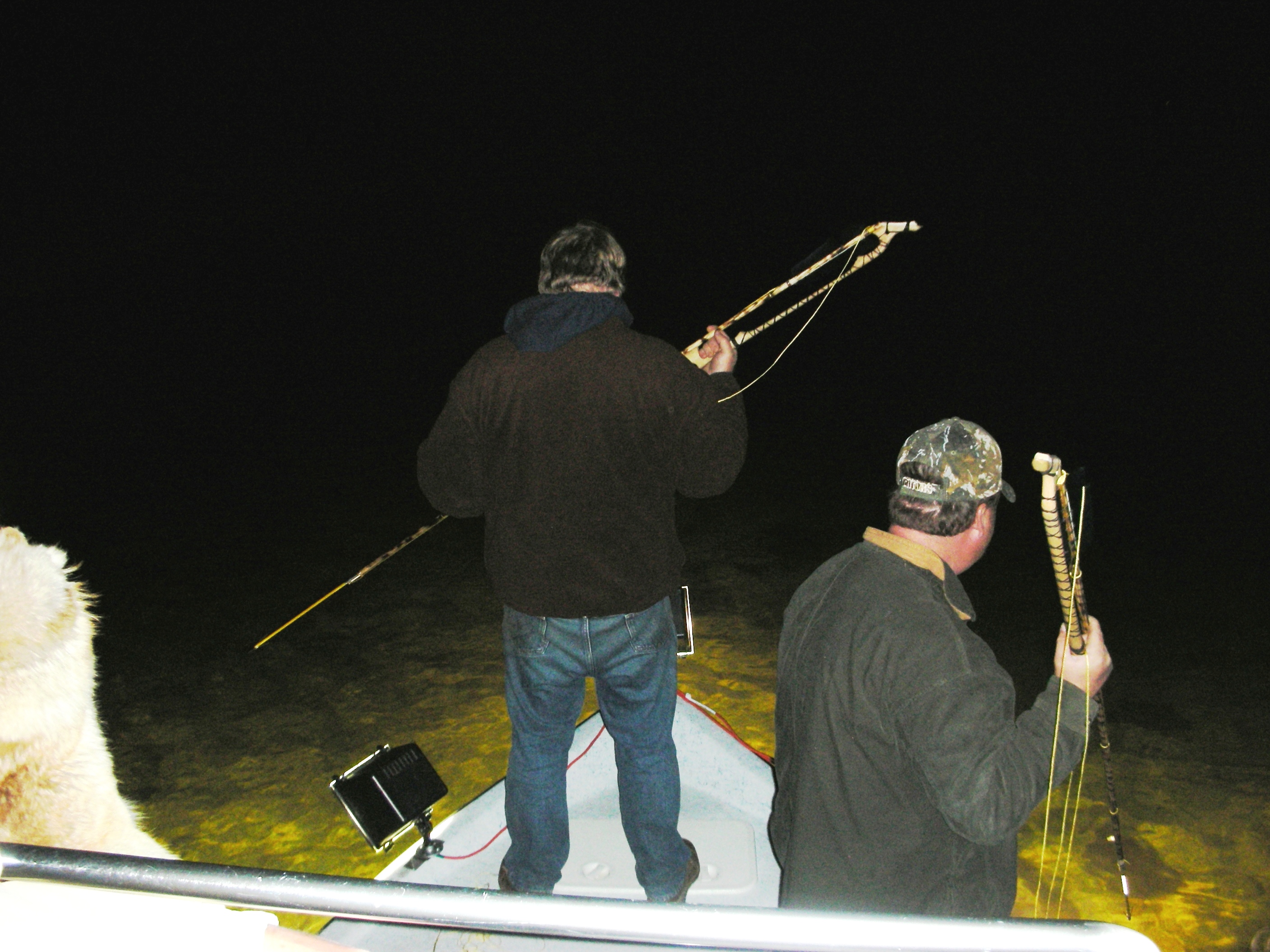|
Atlatls are devices used
to throw darts (spears). These devices were developed throughout the world by such civilations as the Aztecs, Aborigines from
Australia and Indonisia, Incas, Inuits and many more. It is unknown exactly where the atlatl originated but archeological
evidence shows that it has been in use for at least fifteen thousand years. It is possible that it was invented and reinvented
many times over hundreds of thousands of years by countless cultures. The atlatl is a device that is used to lengthen the
arm, adding a greater mechanical advantage than throwing a spear with one's bare hands, which makes the darts able to fly
much faster and with much more force, with less power provided by the thrower.
The atlatl is usually about
15" to 30" long, and on one end has a hook of some sort, and the other end has some sort of hand hold. The hook on the end
of the atlatl is typically made out of bone, wood or horn, and is designed to connect to the back end of the dart. Each dart
has a small dimple at the end that fits the hook. The dart lays parallel to the atlatl, and at the handle end it is held in
place by the fore finger and thumb. Some atlatls, such as the one in the picture above have rests for the dart, others don't.
The varieties and types of atlatls are almost endless, and each has different features.
The atlatl is held in the
thrower's prefered hand, with the dart parallel to the atlatl. The thrower points the dart at the intended target, steps into
the direction of the shot, while the end of the atlatl swings around in a flipping motion, pushing the dart forward. As soon
as the cast is started, the dart is released by the fingers holding it, while the atlatl itself is retained in the hand. Centrifugal
force keeps the spur in contact with the knock dimple. Then, it is simply a matter of following through until the dart leaves
the atlatl. Many different types of throwing styles have been developed by different atlatlists but they all are something
like this.
Atlatls and darts vary
in size, shape, material and quality. There are as many styles of atlatls and darts as there are atlatlists. The equipment
of atlatlists varies from the simplest stick-like atlatls to elaborate, decorated atlatls that are pieces of art as well as
deadly weapons. Weights are often used both to decorate atlatls and to improve their stability, balance, and accuracy. No
atlatl is complete without a good set of matchinng darts. Darts range from 5 feet to 8 feet, but average about six feet long.
Competition and hunting darts tend to be longer. Usually, the longer the dart, the more accurate it is, but the longer it
is, the shorter the distance is that it can be cast. Atlatls, darts and parts to them have been made from many different kinds
of materials including, wood, metal, stone, bone and cane. Check out Thunderbirds many different designs. Each has its purpose,
form following the function of each of the various designs.
Atlatls are used by many
enthusiasts for both target shooting and hunting. Although not legal for hunting in the United States and most of the rest
of the world, many atlatlists pay to hunt on preserves. Wild Boars are most often hunted, but many animals, from Fallow Deer to Caribou have been killed
by the atlatl in recent times. Atlatl enthusiasts are trying to get their state governments to legalize atlatl hunting and
fishing just like bow and firearm hunting is allowed. This goal is slowly becoming a reality. Contact your local state legislature
to support the ongoing effort to legalize atlatl hunting and fishing. For those of you who are not into the hunting or fishing
aspects of the atlatl, there are dozens of atlatl contests held throughout the world. There also is a World Atlatl Association,
which we encourage you to join. Among the many benifits of the World Atlatl Association is the news letter that will help
keep you abreast of the latest information about atlatls and events in the world. They also keep track of the top atlatl scores
throughout the world in a contest called the International Standard Accuracy Contest (ISAC) that measures the skill level
of each contestant, relitive to all the other contestants.
With more and more atlatlists taking their first throws
every day, and ever increasing interest being expressed , the sport is one of the fastest growing past times around.


|

